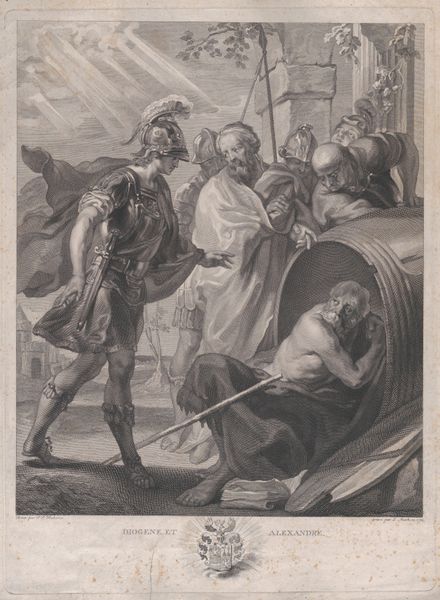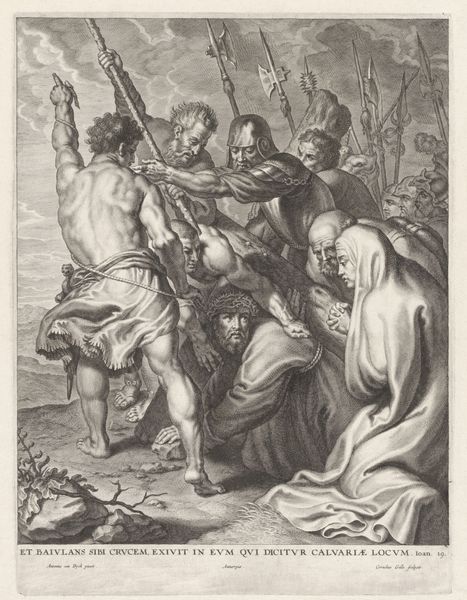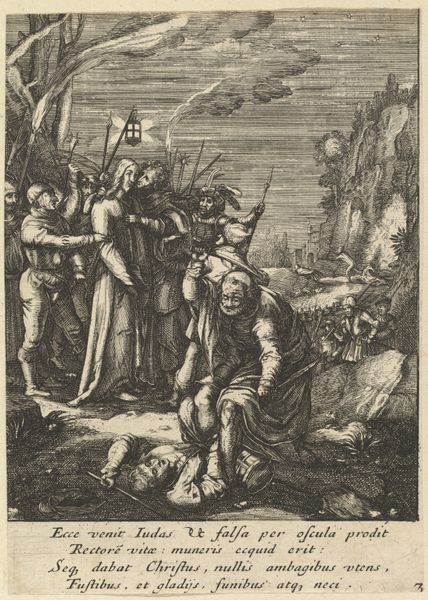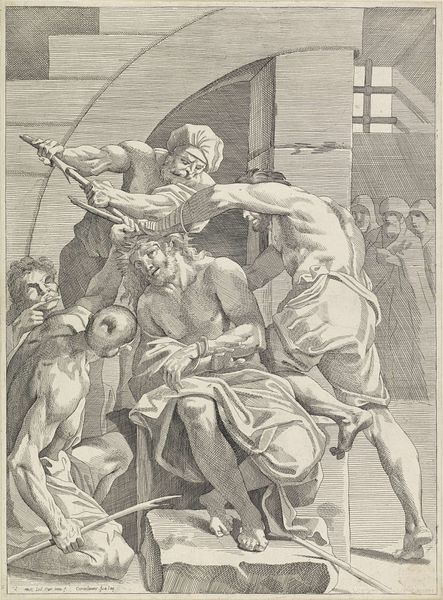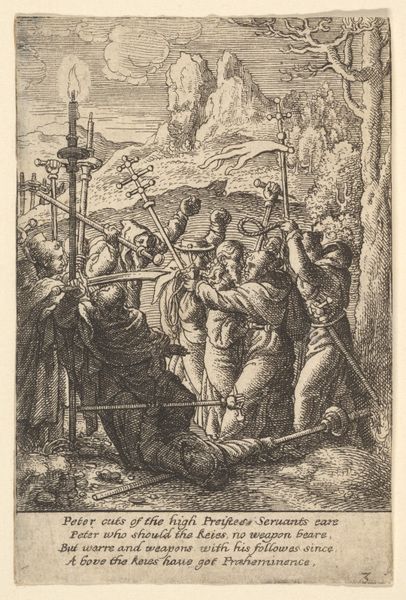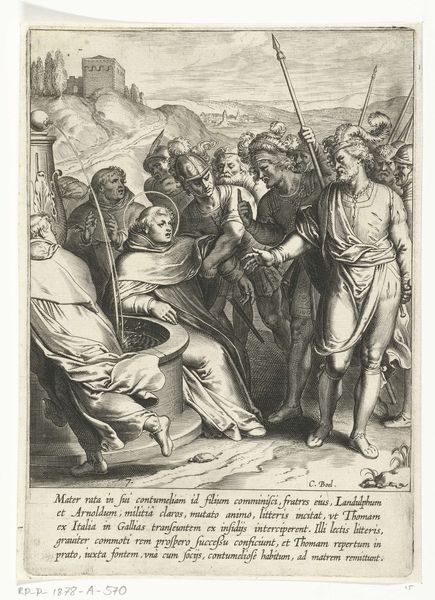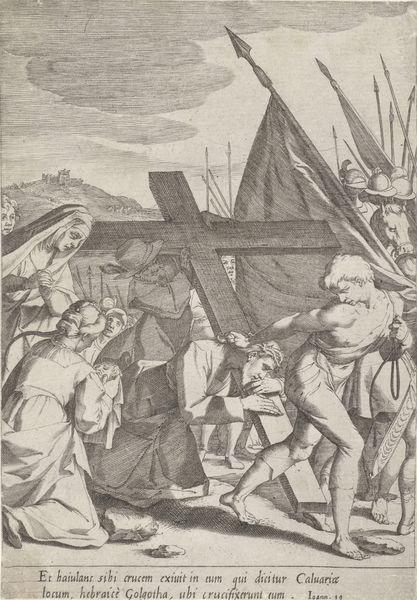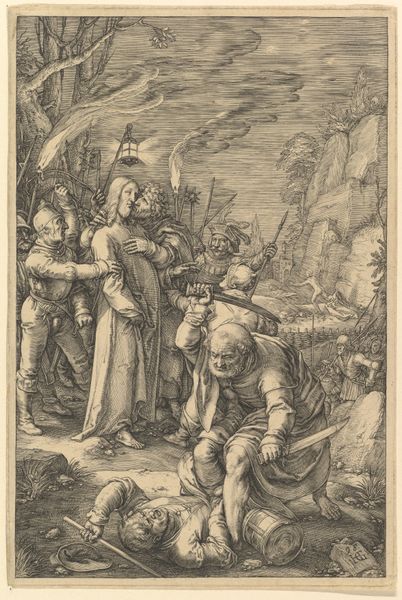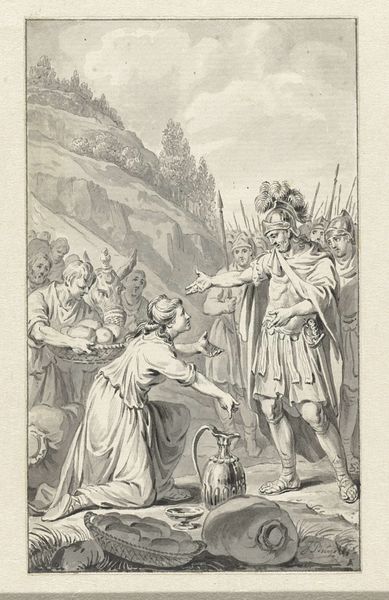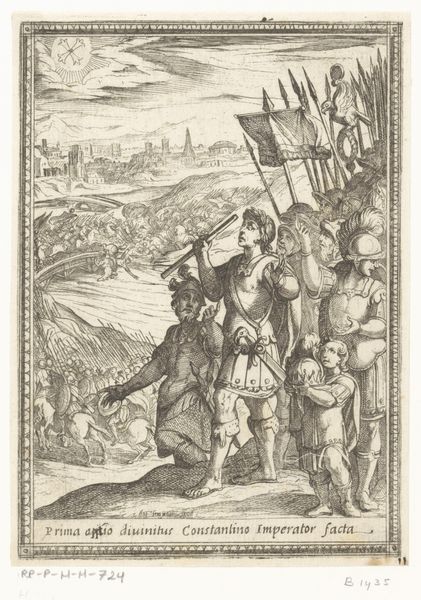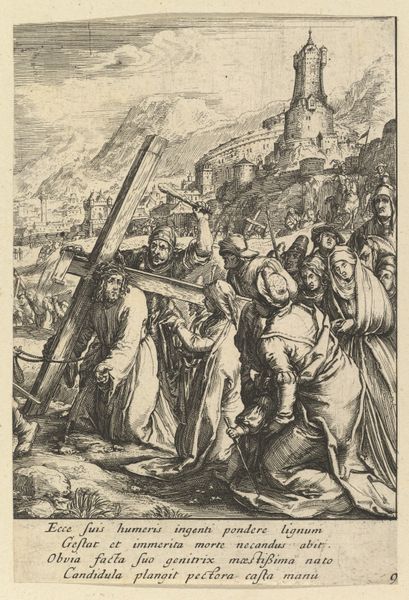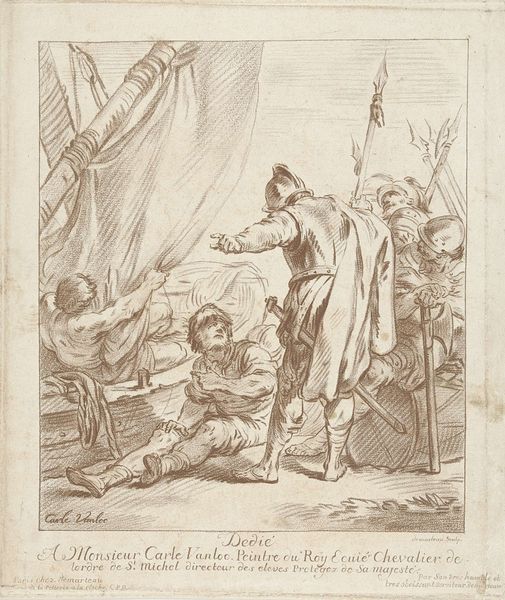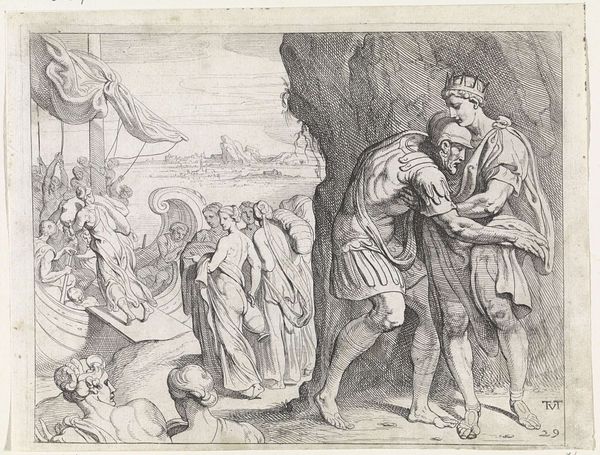
Plate 11: Ferdinand greeted by the Elector of Cologne; from Guillielmus Becanus's 'Serenissimi Principis Ferdinandi, Hispaniarum Infantis...' 1636
0:00
0:00
drawing, print, etching, engraving
#
drawing
#
baroque
# print
#
etching
#
horse
#
men
#
portrait drawing
#
history-painting
#
engraving
Dimensions: Sheet (Trimmed): 14 11/16 × 10 3/8 in. (37.3 × 26.3 cm)
Copyright: Public Domain
Editor: This is Plate 11: Ferdinand greeted by the Elector of Cologne, an etching and engraving by Pieter de Jode II, from 1636. It’s currently held at the Metropolitan Museum of Art. It’s striking how formal the encounter appears, very staged. What can you tell me about it? Curator: This image is loaded with political and social implications. Beyond the staged formality, we must ask, what power dynamics are at play? Consider Ferdinand's position as the Infante of Spain and the Elector of Cologne's role within the Holy Roman Empire during the Thirty Years' War. This isn't just a greeting; it’s a negotiation of power, faith, and potentially, survival. What do you notice about how they are dressed? Editor: Ferdinand definitely looks more vibrant, young, and active in his military garb compared to the Elector’s heavy robes. Curator: Precisely! Think about what clothing signified in the 17th century. Sumptuous clothing reinforced status, masculinity, military power, as well as colonial narratives. Also note the detail and labor involved in the rendering. Editor: It almost seems like propaganda, an attempt to portray Ferdinand favorably. Curator: Exactly. These images often functioned as visual rhetoric, shaping public opinion and solidifying political narratives. Can you imagine how the symbols in this image might resonate differently depending on one's position within the conflict? Consider also that the phrase below the image reads "The Present Surpasses Fame." Editor: So, even in an image seemingly about peace, there are layers of conflict and statements about social standing being expressed. It really shows the role of art beyond just aesthetics. Curator: Precisely! Recognizing art as a powerful form of cultural and political commentary allows us to analyze its relevance to contemporary issues around power, identity, and representation. Editor: I’ll definitely look at Baroque art differently from now on. Thank you.
Comments
No comments
Be the first to comment and join the conversation on the ultimate creative platform.
